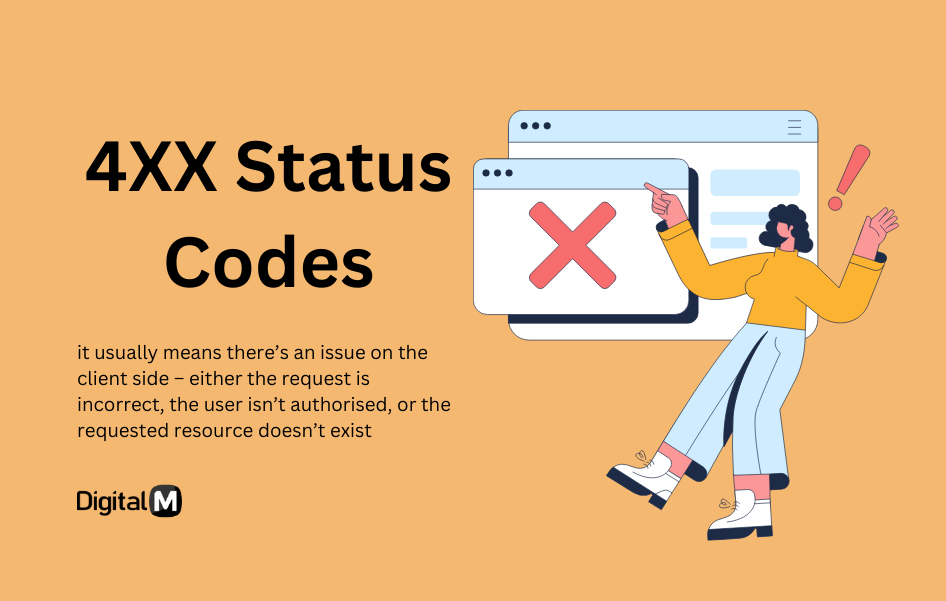4xx Status Codes
In the realm of web development and SEO, 4xx status codes refer to a group of HTTP status codes that indicate client errors. These codes are returned by the server when the client (usually a web browser) has made a request that the server couldn’t fulfil for some reason.

Here are a few examples:
400 Bad Request:
Definition: The server couldn’t understand the request because it’s malformed or invalid. This often happens when there’s an issue with the data the client sent to the server.
401 Unauthorised:
Definition: The client is not authorized to access the requested resource. It typically means that the user needs to provide valid credentials, such as a username and password.
403 Forbidden:
Definition: The client is authenticated, but it doesn’t have permission to access the requested resource. It’s like being denied entry to a restricted area even though you’ve shown your ID.
404 Not Found:
Definition: Perhaps the most well-known 4xx code, it indicates that the server couldn’t find the requested resource. It’s like looking for a book in a library, and it’s not on the shelf.
In simple terms, when you encounter a 4xx status code, it usually means there’s an issue on the client side – either the request is incorrect, the user isn’t authorized, or the requested resource doesn’t exist. It’s like a signal from the server saying, “Hey, something’s not quite right with the way you’re asking for things.”

